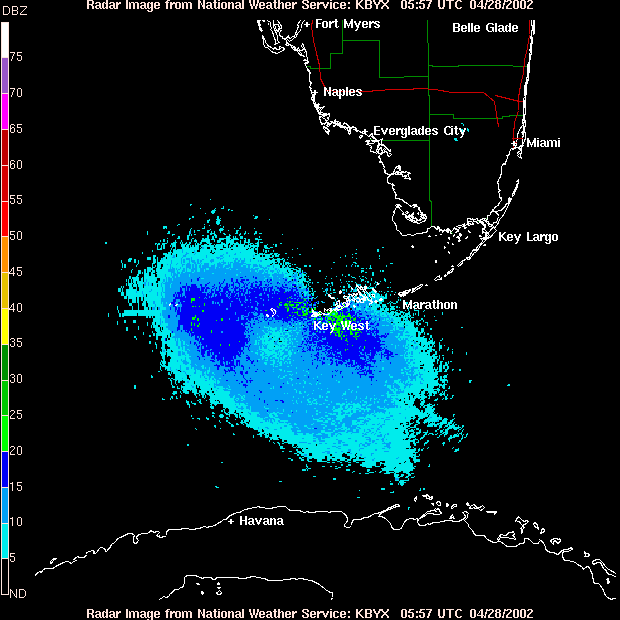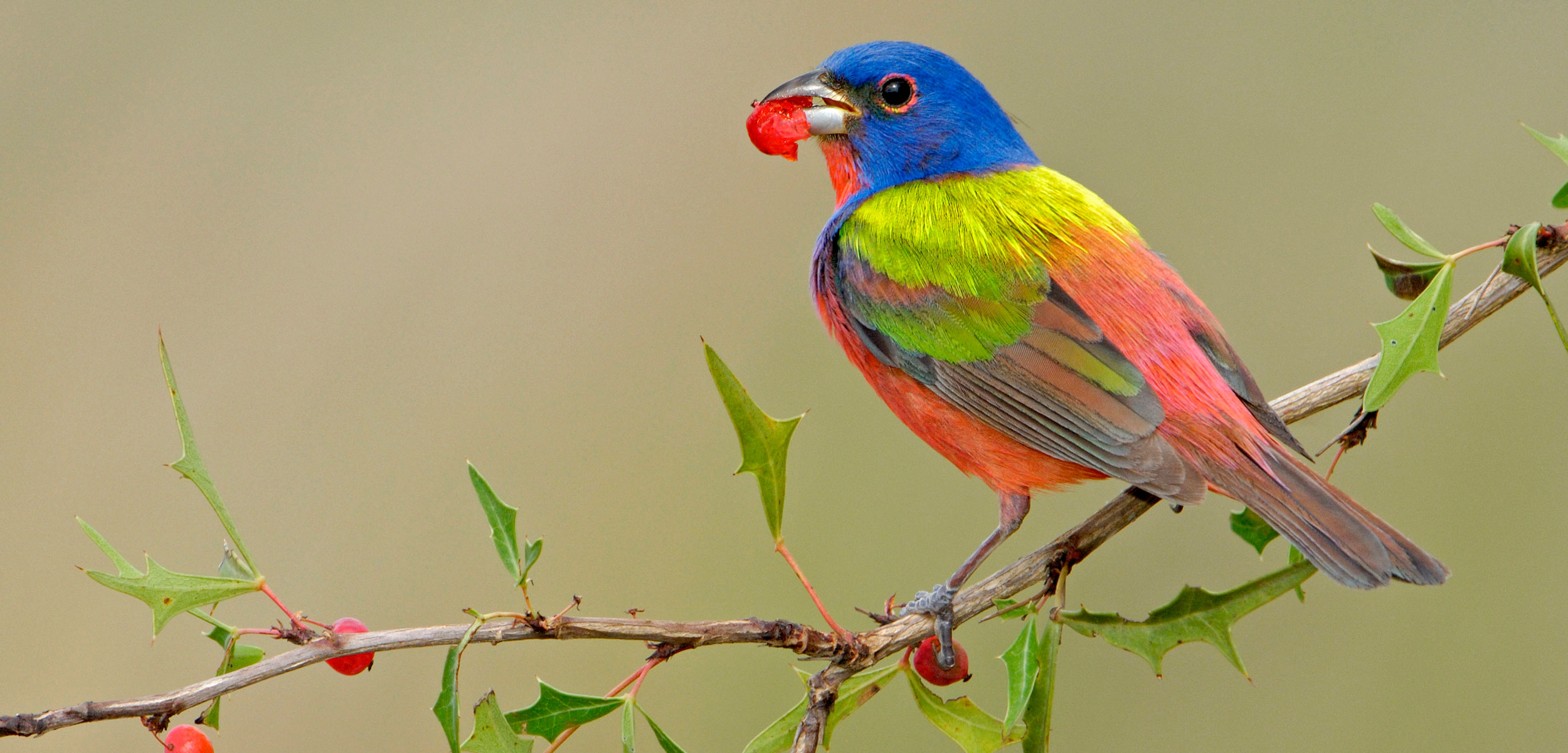How to Count a Billion Birds
Each spring, billions of birds cross the Gulf of Mexico. New research is giving scientists a detailed look at the members of this massive migration.
Article body copy
Over the next 18 days, from April 19 until May 7, more than one billion birds will attempt the perilous journey north over the Gulf of Mexico to reach their spring breeding grounds in North America. As few as one in five will make it back south to their winter habitat. This arduous journey—by gnatcatchers, flycatchers, warblers, buntings, and others—takes place along one of the most significant migration routes in the world.
The marshes, beaches, and forests around the Gulf are crucial refueling points, especially on the Texas and Louisiana coasts where spring migrants arrive starving. More than 100 species of shorebirds, waterfowl, and songbirds have migrated along the 2,700-kilometer Gulf coastline during this same three-week window for the past 20 years, including the blue-feathered indigo bunting, which flies in flocks up to 100 strong. Painted buntings, and scarlet and summer tanagers, also color the skies with streaks of red. During peak times, there can be as many as 26,000 birds per kilometer of airspace.
This extraordinary natural phenomenon has long intrigued birders, but until recently the total number of birds using this route was not known. Working this out is crucial to understanding the migration and learning how to protect the species that undertake it.
In a pioneering study, researchers led by Kyle Horton, an ornithologist at Cornell University in Ithaca, New York, combined two very different streams of data to produce a new understanding of the migration. For the first time, Horton and his colleagues combined thousands of bird sightings logged on the citizen science app eBird with observations made by 11 weather radar stations along the Gulf Coast between 1995 and 2015.
Weather radar was designed to measure the intensity of rain. Radar measures “reflectivity,” which is the amount of power that returns to the radar receiver after the signal rebounds off precipitation. This shows how dense the rainfall is.
In 1962, radar at the United States National Weather Service bureau in New Orleans was first used to track bird migration in Louisiana. Since then, it has been used to track localized bird movements, roost sites, and stopover sites. As well as giving an idea of the density of birds, it also gives an indication of the speed and direction the migrants are traveling in.
This approach, however, is limited to calculating the total biomass of a flock—radar cannot detect individual birds nor differentiate between species. Sightings from birdwatchers are far more detailed about individual birds, but lack radar’s ability to measure a broad area. Taken together, though, the data paints a detailed picture of this tightly packed airway.
“We calculated that an average of 2.1 billion birds crosses the entire length of the Gulf Coast each spring as they head north to their breeding grounds,” says Horton. “Until now, we could only guess at the overall numbers from surveys done along small portions of the shoreline.”

Weather radar, designed to monitor rain, is also used to track the movement of birds across the Gulf of Mexico. Photo by National Weather Service
Half of all birds that make the crossing will do so during the next 18 days because there is an abundance of insects to fuel their migration, as well as generally favorable weather conditions.
Kristen Covino, an ecologist at Loyola Marymount University in Los Angeles, California, who was not involved in the study, says the research will have a profound impact on the field. “The methods used and the integration of the two data sources open up new ways to both ask and answer questions about geographic and temporal trends in avian migration,” Covino says.
But just as experts are beginning to better understand the magnitude and dynamics of the migration, myriad forces threaten to change it.
Ever present is the threat of stormy weather. “In bad conditions, hundreds of thousands of dead birds wash up on beaches,” Horton says. Storms frequently force birds to land on ships or oil rigs. “The birds are doing that out of desperation—either land on an oil reserve or die.”
Another concern is the prevalence of artificial lighting along the Gulf Coast. Scientists think lights disorient and distract the birds, which makes them less able to focus on attracting a partner when they arrive at their breeding grounds.
However, a larger existential threat is looming, and it’s caused by climate change. Many birds use the amount of available daylight as their cue to embark on the journey. But insect abundance is often linked to temperature. As the climate shifts, it’s possible the birds’ migration will fall out of sync with the peak of insect abundance. Many birds might not be able to adapt fast enough, Horton says.
This is one reason why the study is so important says Eric Wood, an avian ecologist at California State University in Los Angeles who reviewed the paper. “This work provides a needed baseline on numbers and timing of migratory birds across the Gulf of Mexico,” says Wood, which is critical for understanding their overall status, as well as the threats they face.

